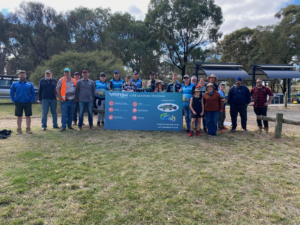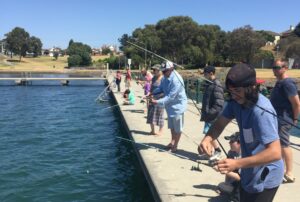October 23, 2019
A statewide recreational fishing survey now provides key information on anglers favourite fishing locations, preferences for improving fishing experience, and the economic value of environmental flows for recreational fishers.
Earlier this year VRFish in partnership with Glenelg Hopkins CMA and Marden Jacobs Associates ran a Victorian Inland Recreational Fishing Survey, with almost 500 respondents completing the survey. The survey was funded as part of the Victorian Government’s $222 million investment to improve the health of waterways and catchments.
The survey asked anglers about their buying/spending habits while undertaking recreational activities to allow an economic value to be placed on recreational fishing to communities.
The survey also asked recreational anglers where they enjoyed fishing, and what they felt were the most important actions, such as improved access, flows, and carp control to improve their recreational fishing experiences.
The results showed that the most popular inland river basins for fishing were the Goulburn (29%), followed by the Murray River (15%), East Gippsland (13%) and South Gippsland (13%).
To determine the economic value of recreational fishing, the Glenelg Basin (including its reservoirs) was used as a test case.
Within the Glenelg Basin, anglers wanted to see more access for land-based fishing (33%), improved boat access (42%), improved water flows and levels that benefit fish (42%), stocking more fish (45%) and removal of carp (45%).
The survey was able to determine that the total economic value of recreational fishing along the Glenelg River is around $690,000 per year.
Environmental flows contribute to 30% of this value – or $207,000 – through the provision of flows and improved water quality to boost recreational fish populations.
“Environmental flow releases generate benefits for the environment, individuals and communities,” Glenelg Hopkins CMA CEO, Adam Bester, said.
“In the Glenelg River, we have seen numbers of recreational fish species including Estuary Perch, Black Bream and Tupong increase in response to environmental flows.”
Mr Bester said the survey had shown how important both recreational fishing and environmental flows were to rivers and its communities and individuals.
Michael Burgess, CEO of VRFish said the survey itself is a very cost-effective way of determining how valuable both recreational fishing and environmental flows can be to the wider community.
“Although it was just trialled for environmental flows, it will also be possible to use this approach in the future to determine the economic benefits from other activities such as improved access and in-stream habitat works.
“The survey approach will also enable organisations to target improvement activities and investment that reflect the needs of recreational anglers,” Mr Burgess said.
The Full Report can be downloaded here.








